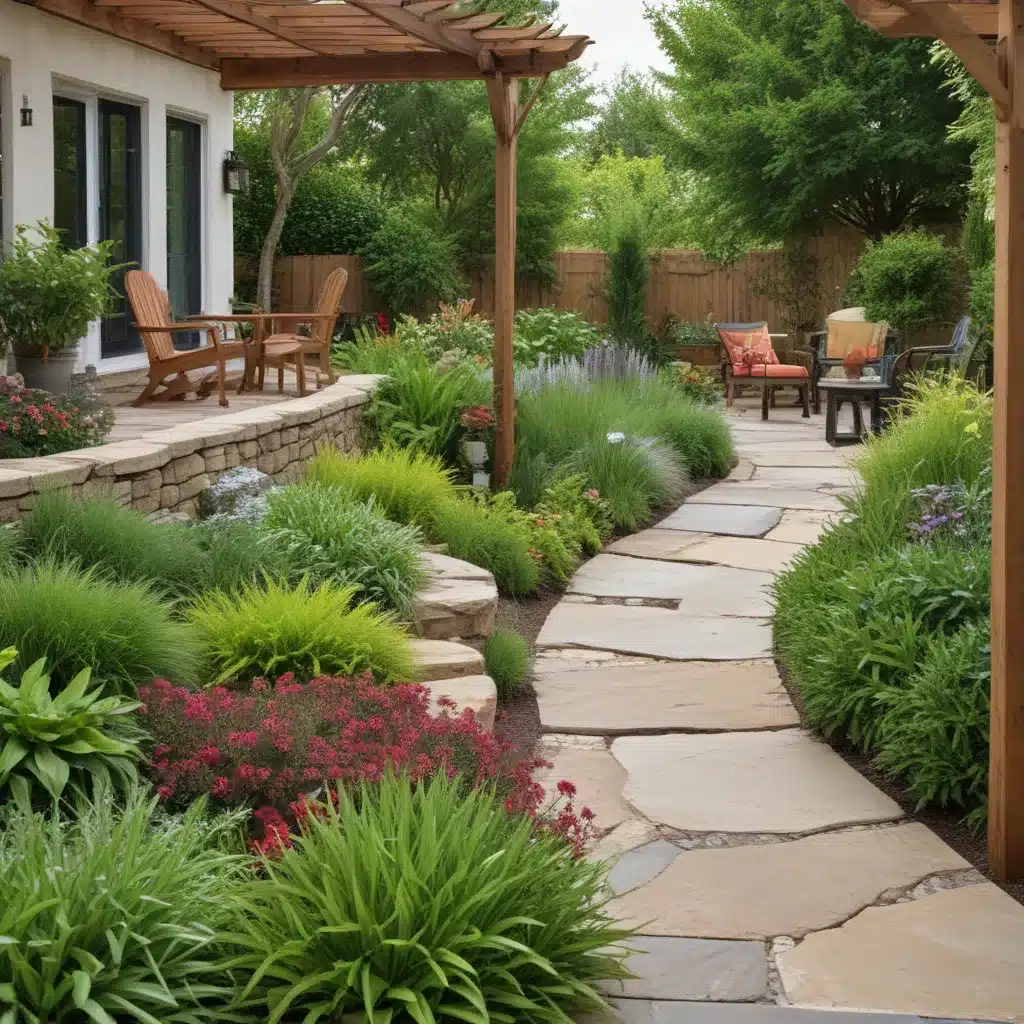
Patio Paving Trends
As homeowners increasingly prioritize environmental stewardship, the demand for sustainable patio paving solutions has surged. Innovative materials and installation techniques are transforming outdoor living spaces, blending aesthetics with eco-friendliness.
Environmentally-Friendly Paving Materials
Traditional concrete and asphalt pavers have long dominated the patio market, but their environmental impact has prompted a shift towards more sustainable options. Permeable pavers, made of porous materials like pervious concrete or interlocking pavers, allow rainwater to seep into the ground, reducing runoff and recharging local aquifers. These solutions not only minimize the strain on municipal drainage systems but also support healthy soil ecosystems.
Another popular choice is natural stone, such as flagstone or travertine. These durable materials are quarried with minimal processing, reducing the carbon footprint associated with manufacturing. When sourced locally, natural stone pavers further diminish the environmental impact of transportation. Their timeless appearance also complements a wide range of landscape design styles.
Permeable Paving Solutions
Permeable paving is a game-changing approach that addresses the challenges of stormwater management. By allowing water to infiltrate the ground, these systems reduce the risk of flooding and mitigate the urban heat island effect. Permeable pavers come in a variety of visually appealing patterns and textures, seamlessly integrating with native plantings to create a cohesive outdoor oasis.
Integrating Native Flora
Incorporating native plants into patio design is a hallmark of sustainable landscaping. These resilient species thrive in local soil and climate conditions, requiring less irrigation and maintenance than traditional ornamental plants. By selecting native flora, homeowners can create visually stunning patios that support local ecosystems and reduce their environmental footprint.
Outdoor Design Ideas
Crafting an outdoor living space that is both beautiful and functional requires a multifaceted approach, blending innovative design strategies with practical considerations.
Incorporating Diversity
Successful patio design embraces diversity, both in terms of materials and plant life. Combining permeable pavers, natural stone, and decorative accents like boulders or water features creates visual interest and texture. Likewise, incorporating a mix of native trees, shrubs, and perennials ensures year-round appeal and supports local wildlife.
Maximizing Functionality
The patio should seamlessly transition from the home’s interior, serving as an extension of the living space. Strategically placing seating areas, outdoor kitchens, and shaded zones enhances the usability of the space, making it a true hub for entertaining and relaxation.
Aesthetic Considerations
Balancing the practical needs of the patio with aesthetic appeal is crucial. Designers often take cues from the home’s architecture, using complementary materials and color palettes to achieve a cohesive look. Integrating the patio with the surrounding landscape through thoughtful plant selection and hardscape elements further enhances the visual appeal.
Installation Techniques
Proper installation is the foundation for a long-lasting, sustainable patio. Expert contractors employ specialized techniques to ensure the integrity and longevity of the outdoor living space.
Proper Site Preparation
Careful site preparation is essential for any patio project. Contractors assess soil conditions, drainage patterns, and grade to ensure a stable base that can withstand the weight of the paving materials and withstand environmental stresses.
Sustainable Construction Methods
Sustainable construction methods minimize waste and environmental impact. This may involve using recycled or locally-sourced materials, implementing erosion control measures, and employing energy-efficient tools and equipment.
Ensuring Long-Term Durability
The installation process is crucial for the patio’s long-term durability. Proper compaction, appropriate base materials, and attention to detailed edges and transitions all contribute to the patio’s resilience against weather, foot traffic, and other environmental factors.
Maintenance Guidelines
Maintaining the aesthetic and functional integrity of a patio requires a thoughtful approach to cleaning and preventative care.
Preserving Patio Aesthetics
Regular cleaning and sealing of porous paving materials like permeable pavers or natural stone helps preserve their visual appeal and prevent the buildup of debris or stains. Homeowners should consult with landscape professionals to determine the appropriate cleaning agents and techniques for their patio’s specific needs.
Eco-Friendly Cleaning Practices
Sustainability-minded homeowners should opt for eco-friendly cleaning products that are gentle on the environment and safe for surrounding plant life. Avoiding harsh chemicals and opting for natural, biodegradable alternatives aligns with the overall ethos of a sustainable outdoor living space.
Preventative Measures
Proactive maintenance, such as addressing cracks or settling, helps extend the patio’s lifespan. Periodic inspections and prompt repairs can prevent more significant issues from arising. Homeowners should also consider strategies like regular application of sealants or the strategic placement of potted plants to protect paving materials from weathering and discoloration.
Cost Comparisons
Investing in a sustainable patio involves careful budgeting and understanding the long-term benefits of eco-friendly design.
Budgeting for Patio Projects
The initial cost of a sustainable patio may be slightly higher than traditional options, but homeowners should consider the potential long-term savings. Permeable pavers, natural stone, and native plantings often have lower maintenance requirements, reducing ongoing expenses.
Long-Term Investment Considerations
Sustainable patio design can also increase a home’s resale value, as eco-conscious buyers are increasingly drawn to properties that showcase environmental stewardship. By working with experienced Cincinnati patio paving professionals, homeowners can confidently navigate the cost-benefit analysis and create a patio that serves as a valuable long-term investment.
Balancing Sustainability and Affordability
Achieving a balance between sustainability and affordability is crucial for many homeowners. Landscape designers can offer cost-effective solutions, such as using a combination of permeable pavers and natural stone, or incorporating native plants in strategic areas to reduce irrigation needs. These strategies help homeowners enjoy the benefits of a sustainable patio without breaking the bank.
By embracing innovative paving materials, integrating native flora, and employing sustainable installation and maintenance techniques, homeowners can transform their outdoor living spaces into vibrant, eco-friendly retreats. Whether you’re seeking to enhance your property’s curb appeal, promote environmental responsibility, or create a functional oasis for relaxation and entertainment, sustainable landscape design offers a wealth of opportunities to bring your patio vision to life.

